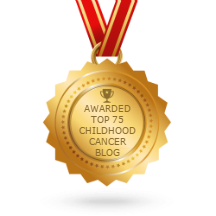Wilms Tumour
Wilms’ Tumour is a cancer of the kidneys; it derives from specialised cells in the embryo known as metanephric blastema. These cells contribute to the development of the child’s kidneys while they’re in the womb and generally disappear at birth, but cells called nephrogenic rests can still be found in children with Wilms Tumour. Sometimes these cells begin to grow out of control, resulting in a mass of primitive, small, rapidly dividing cells called Wilms Tumour. This can affect only one kidney (unilateral) or both (bilateral).
Wilms’ Tumour is the third most common childhood cancer and accounts for 6-7% of childhood cancer cases. It is most prevalent in children between the ages of 3 and 4 years. It may spread to the liver, lungs, or nearby lymph nodes.
Causes of Wilms’ Tumour
Wilms’ tumour may be part of a set of symptoms or conditions that occur together, called a genetic syndrome, which affects growth or development. Such a syndrome is usually due to abnormal genes.
Children with the above genetic syndromes and birth defects should be screened for Wilms’ tumor every three months until at least age 8.
Signs and Symptoms
Some of the typical signs and symptoms of Wilms’ Tumour are:
- A lump, swelling, or pain in the abdomen.
- Abdominal swelling and/or pain
- Abnormal urine colour or blood in the urine
- Constipation
- High fever of unknown origin
- High blood pressure
- Loss of appetite
- Malaise
- Nausea, vomiting (infrequent symptoms)
- Night sweats
- Upset stomach
- Weight loss
Some of the above could also be a sign of a medical condition other than cancer, so please consult your doctor if your child exhibits any of these symptoms.
Tests and Diagnosis
Wilms’ Tumour can be diagnosed or staged using the following tests and procedures:
- Abdominal Ultrasound Scan: High-energy sound waves are bounced off internal tissues or organs and make echoes which form a picture of the body tissues called a sonogram
- MRI (Magnetic Resonance Imaging): An MRI or nuclear magnetic resonance imaging (NMRI), is a procedure whereby a series of detailed pictures is taken of the inside of the body using a computer, a magnet and radio waves
- CT scan (CAT scan): A CAT scan takes a series of detailed pictures of the inside of the body from different angles, using a computer linked to an x-ray machine; a dye may also either be swallowed or injected into a vein to allow the organs and tissues to show up more clearly on the pictures.
Other tests that may be done include x-rays, a complete blood count (CBC), blood chemistry studies, a liver function test (IVP), a renal function test, urinalysis and a biopsy.
Treatment Options
Treatment options consist of:
- Surgery: All children with Wilms’ tumour will have surgery. If the tumour is only in one kidney a nephrectomy (removal of the kidney) will be done. If the tumour is in both kidneys or has spread outside of the kidney, a biopsy will be done, where a piece of the kidney is removed and tested by a pathologist for cancer. The results will determine further treatment
- Chemotherapy: The use of a combination of anti-cancer drugs to destroy or shrink cancer cells is the preferred treatment for children, and may be done prior to and after surgery
- Radiotherapy: High-energy rays that destroy the cancer cells but do minimal harm to normal cells. The amount o f radiotherapy will depend on the size and spread of the tumour
Some of the treatment options may result in after-effects such as nausea, vomiting, irritation or soreness of the skin from radiation, hair loss, a higher risk of infection, fatigue, bruising and bleeding or diarrhoea. The doctor should explain all of this to you, but if they do not, please ask them about side effects.
Awareness Ribbon Colour
The awareness ribbon colour for Wilms’ Tumour is Dark Orange
This article was researched and written on behalf of Little Fighters Cancer Trust by Billi du Preez of Red Feather Scribes.
Academic Editing by Dr Marc Hendricks MBChB (UCT), DIP PEC (SA), DCH (SA), FCPaeds (SA), CMO Paeds (SA) Senior Specialist, Paediatric Oncologist Red Cross War Memorial Children’s Hospital
Please feel free to share the article, but please respect copyright by sharing the article in its entirety, as is, including this paragraph with links at the bottom of the article. Thank You!

















Really interesting information, thank you
LikeLike
Pingback: Childhood Cancer Survivors Now Living Longer | Little Fighters Cancer Trust
Pingback: New Genetic Cause of Wilms Tumour Discovered | Little Fighters Cancer Trust
Pingback: Childhood Cancer Early Warning Signs | Little Fighters Cancer Trust
Pingback: Childhood Cancer ~ A General Guide for Parents: Part I | Little Fighters Cancer Trust